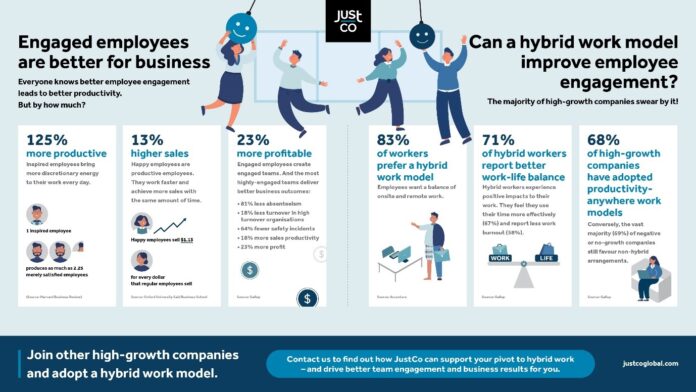CoinW kicks off its “highlight” moment with three Web3-themed events over the course of two days.
On April 12th, the “Hong Kong Web3 Festival 2023” organized jointly by Wanxiang Blockchain Lab, HashKey Group, and W3ME was launched. More than 300 industry leaders, well-known blockchain project founders, investment institutions, regulatory agency representatives, experts, and scholars were invited to this Web3 Festival. Through five venues, they brought cutting-edge Web3 technology to nearly 10,000 on-site participants, jointly discussing the key issues of Web3’s future development, making it one of the largest cryptocurrency events in Hong Kong’s history.
During the Hong Kong Web3 Festival 2023, the world’s leading cryptocurrency trading platform, CoinW, held three events within two days. On the evening of April 13th, CoinW, together with ChainDD, Boliancaijing, and 1783 DAO, held a private cocktail party called “Web3 Hong Kong Night,” specifically inviting government officials, regulatory agency representatives, experts, scholars, well-known Web3 project founders, and investment institutions to attend. At the event, The Director of Business Development of CoinW introduced CoinW’s development history and listing policies in detail, and shared their views on the future development of the Web3 market. During the event, guests also explored the development path and innovative opportunities under the changes brought about by the Web3 era while raising their glasses.
On the evening of the 14th, CoinW, ChainDD, Boliancaijing, and 1783 DAO joined hands again, together with more than 30 well-known media, community, and project representatives in the industry, opened a private sharing meeting on the cutting edge of Web3. Scholars and guests at the meeting engaged in a lively discussion in a closed-door format, focusing on the topic of “Where are the high-quality Web3 projects and Hong Kong’s direction of co-prosperity?” The entire meeting lasted for more than two hours, mainly discussing the technical issues that urgently need to be addressed to realize Web3 and how ordinary people can integrate into the Web3 space. Many attendees contributed their unique insights to the discussion.
On the evening of April 14th at 7:30 pm, more than 50 industry guests and representatives boarded the “Cheung Po Tsai” yacht at the Public Pier No. 9 in Tsim Sha Tsui, Hong Kong. On this ancient handcrafted yacht, CoinW, together with PANONY and TingTrader, held the Hong Kong Web3 Carnival yacht private cocktail party. In an elegant atmosphere, guests enjoyed the rhythm of the waves and the scenery on both sides of Victoria Harbour, while industry leaders and experts discussed the latest trends and opportunities in Web3 development, talking about new opportunities and new tracks under the new policies of Web3.
In the future, CoinW will continue to build an international, high-end, and professional platform for industry professionals to learn, communicate, and socialize, providing more Web3 professionals, researchers, and enthusiasts with an excellent opportunity to grasp the latest Web3 technology trends and market dynamics.
CoinW has entered Hong Kong and is actively contacting Hong Kong relevant departments.
Since the Hong Kong government released its virtual asset development policy declaration in October last year, the loose regulatory environment and the genes of a free economy have pushed Hong Kong towards the position of a global Web3 hub. More and more Web3 companies and talents, like CoinW, are gathering in Hong Kong.
In order to seize the opportunities presented by Hong Kong’s virtual asset development, to provide more compliant and secure services to users in Hong Kong and around the world, CoinW has established effective communication with Hong Kong relevant departments, and is actively applying for the qualifications and licenses of a Hong Kong cryptocurrency trading platform. According to insiders, CoinW has hired lawyers and compliance professionals familiar with Hong Kong financial regulations to further understand all related policies. At the same time, CoinW plans to establish a localized trading service center in Hong Kong, focusing on providing cryptocurrency asset trading services to institutional investors and high net worth individuals in Hong Kong.
The prosperous era of the Web3 in Hong Kong is starting, and CoinW will also join hands with more Web3 enterprises to support the innovation and implementation of the Web3 industry in Hong Kong. The Hong Kong Web3 Festival 2023 is just the beginning. A revolution leading the Web3 is brewing in the East.
Hashtag: #CoinW
The issuer is solely responsible for the content of this announcement.
About CoinW
In 2017, a group of young Bitcoin believers gathered together with the goal of changing the world through blockchain technology. From this vision, CoinW was born. Five years have passed, and CoinW has become a leading comprehensive cryptocurrency trading platform, providing a one-stop digital asset service entrance for 220 million digital currency users worldwide. Since its inception, CoinW has been adhering to the service tenet of “empowering blockchain technology financial transformation” and “helping users increase their wealth,” continuously optimizing its product line, making innovative breakthroughs, shouldering the mission of realizing global financial freedom and inclusiveness, leading new trends in the cryptocurrency industry, and promoting the connection of blockchain technology and cryptocurrency assets with the world and the future.
- A global New first-tier exchange.
Innovative product ecosystem and globalized operations to aggregate traffic.
- In line with regulatory requirements
Globalized and compliant development approach, embracing regulation and holding multiple financial regulatory licenses from various countries.
- Global deployment to achieve inclusive finance.
Expand the presence globally in the past five years, serving 8 million users in 200 countries and regions, with a mission to achieve global financial freedom and inclusiveness.
- Secure and reliable.
Industry-leading security and risk control system, with a distributed system architecture, and a five-year track record of zero security incidents, utilizing cold and hot wallets, multi-signature technology.
- High-quality projects globally launched first.
Select quality projects for global debut, capturing investment opportunities.
- over 1,000 cryptocurrencies Listed.
Including popular projects in global markets, with a rich variety of coins, high-speed matching engines, and the deepest order book in the industry.
- Convenient, fast, and secure OTC trading
Supporting over 40 fiat currencies and credit card purchases, providing a one-stop-shop for buying and selling.
- 24/7 efficient customer service support.
24/7 operating model, providing timely answers to users’ inquiries.
- Cryptocurrency wealth management
High-yield financial management, flexible term, and redeemable at any time.
Website: ![]() www.coinw.com
www.coinw.com
Twitter:![]() https://twitter.com/CoinWZH
https://twitter.com/CoinWZH
TG:![]() https://t.me/CoinWTaiwan
https://t.me/CoinWTaiwan
IG:![]() https://www.instagram.com/coinwexchange/
https://www.instagram.com/coinwexchange/
LINE Community:![]() https://reurl.cc/GelO8Z
https://reurl.cc/GelO8Z







